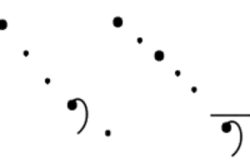Images
This is an introductory course in biochemistry, designed for both biology and chemical engineering majors.
A consistent theme in this course is the development of a quantitative understanding of the interactions of biological molecules from a structural, thermodynamic, and molecular dynamic point of view. A molecular simulation environment provides the opportunity for you to explore the effect of molecular interactions on the biochemical properties of systems.
This course assumes that students have taken introductory chemistry, including basic thermodynamics, as well as introductory organic chemistry. An introductory biology course is not a prerequisite for the course, but students would benefit from some prior exposure to biology, even at the high school level. Required mathematical skills include simple algebra and differential calculus.
Additional Course Details
Topics Covered: Protein Function, Structure and Function of Carbohydrates, Lipids and Biological Membranes, Metabolism, Nucleic and Acid and Biochemistry. Estimated Time to Complete Course: This is a semester long course, you will need to complete 3 modules/week. Additional Software or Materials Required: You will need to have Flash, Java, and mathml installed. Flash is used for the molecular simulator environment, Java for displaying molecular structures using Jmol, and mathml to typeset equations. These programs are free. More detailed information is provided in the course under “Test and Configure Your System.” Course Last Updated Date: January 2012 Changes in This Update Include: Inclusion of additional Jmol activities and supporting assessments.
In-Depth Description
The two main learning goals of the course are:
Predicting how changes in structure affect function.
Utilizing quantitative approaches to characterize structure-function relationships in biochemical systems.
The course begins with amino acids and transitions into protein structure and thermodynamics. Protein-ligand binding is treated for both non-cooperative and cooperative binding using immunoglobulins and oxygen transport as examples. The enzymatic function of proteins is explored using serine and HIV proteases as examples. Enzyme kinetics is treated using steady-state kinetic analysis. Enzyme inhibition is treated quantitatively, using HIV protease as a key example.
Carbohydrate and lipids are presented in sufficient depth to allow the student to fully understand major aspects of central metabolism. The discussion of metabolism is focused on energy generation, fermentation, and metabolic control.
The course concludes with an extensive section on nucleic acid biochemistry. The focus of this section is to provide the student with sufficient background so that they are literate in the recombinant DNA technologies as they relate to protein production using recombinant methods.
After a treatment of molecular forces and solution properties, the course builds on molecular and energetic descriptions of fundamental monomeric building blocks to develop a comprehensive understanding of the biological function of polymers and molecular assemblies at the molecular and cellular level. In addition to multiple case studies, the course concludes with a capstone exercise that leads students through the steps required to produce recombinant proteins for drug discovery. The major topics in the course are:
Protein function, including oxygen transport, antibody function, and enzyme catalyzed reactions.
Structure and function of carbohydrates and their importance in central metabolism.
Lipids and biological membranes.
Central aspects of metabolism and metabolic control.
Nucleic acid biochemistry, with emphasis on recombinant DNA technology.
Similar resources
Carnegie Mellon University challenges the curious and passionate to imagine and deliver work that matters.
A private, global research university, Carnegie Mellon stands among the world's most renowned educational institutions, and sets its own course. Start the journey here.
Over the past 10 years, more than 400 startups linked to CMU have raised more than $7 billion in follow-on funding. Those investment numbers are especially high because of the sheer size of Pittsburgh’s growing autonomous vehicles cluster – including Uber, Aurora, and Argo AI – all of which are here because of their strong ties to CMU.
With cutting-edge brain science, path-breaking performances, innovative startups, driverless cars, big data, big ambitions, Nobel and Turing prizes, hands-on learning, and a whole lot of robots, CMU doesn't imagine the future, we create it.


Introduction to Biology

Arabic for Global Exchange

Anatomy & Physiology

American English Speech

Chinese I









